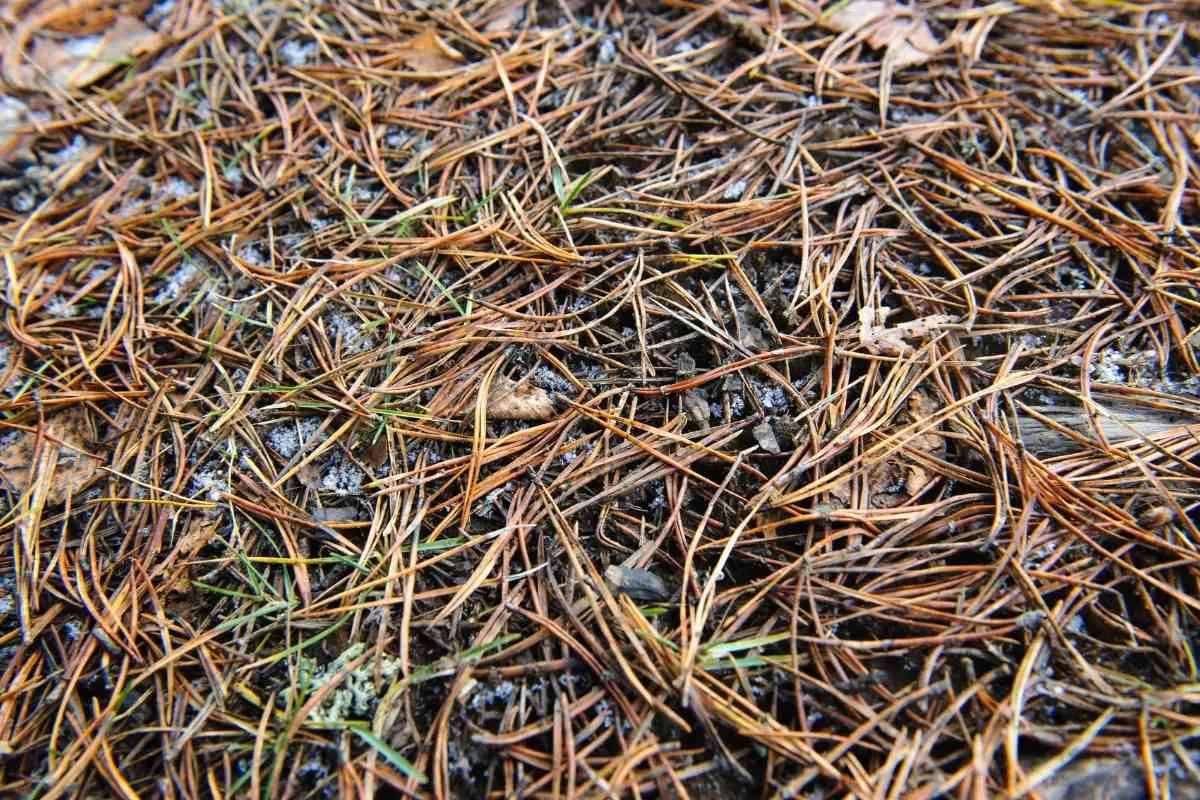If you are looking for mulching options that are long-lasting and low maintenance, pine needle mulch might be the thing you need. Don’t forget the pine straw is actually free as it collects on the ground.
It is not usually as popular as other kinds of organic mulch, but its popularity is growing.
But, before you go on to use it, here’s everything you need to know before you spread it around your garden.
Pine Needles – Nature’s Own Mulch
Mother Nature – she really knows what she’s doing!
Pine trees shedding needles makes a great cover for the soil, squelching down any weeds and making the soil slightly acidic which pine trees love.
The pine needles also help to insulate the plants as well as keep the soil moist.
But that’s not all.
Clever Mother Nature has other things up her sleeve.
Keep In Mind – If you dig down into the pine needle carpet that happens naturally under pine trees, you will see that there is a fungus that begins to grow within the pine needles.
This fungus has light-colored roots (hyphae). This fungus is what holds the pine needles together in the soft, cushiony carpet on the ground.
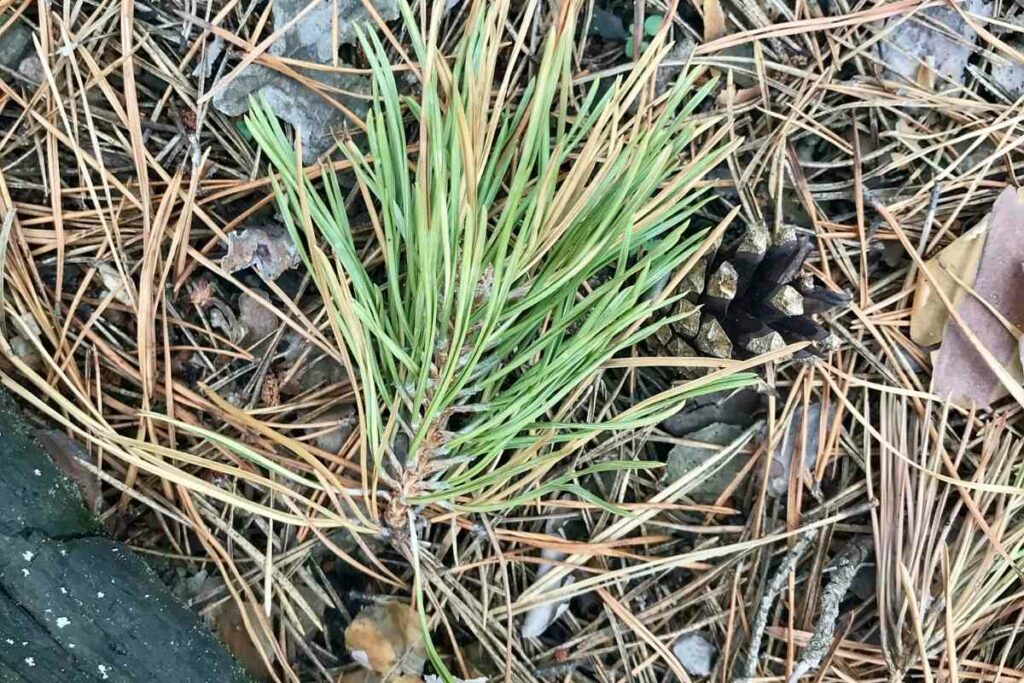
It is this covering that protects against soil erosion when there is heavy rain.
It also protects against moisture evaporating from the soil and drying it out. As such, pine needle is a very effective mulch for your garden.
What Kind of Plants Like Pine Needles As Mulch?
Since pine needles make the soil slightly acidic, many plants love a good pine needle mulch.
Plants such as Arctostaphylos, blueberries and rhododendrons all fall into the ericaceous plants category with their urn-shaped slows and roots like fine hair.
These plants thrive in soil with low pH. Soils that are more alkaline are not great for such plants and they do not do very well.
However, with pine needles added as a mulch, these plants can thrive as well as anywhere else.
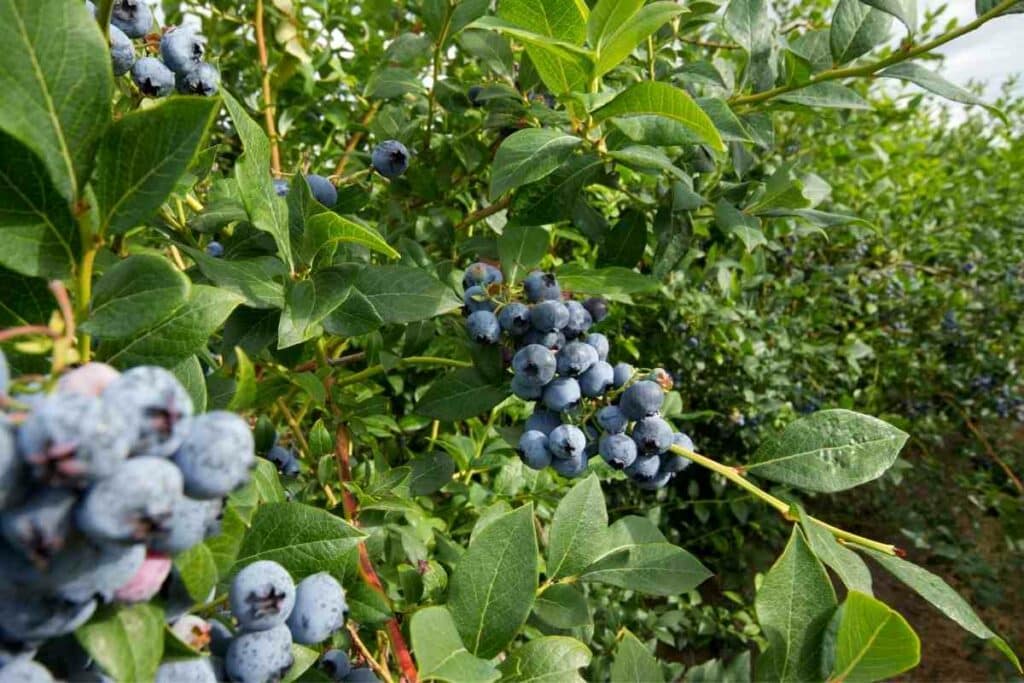
If you have any ericaceous plants that seemed to be stilted in their growth or are wilting somewhat, try adding a pine needle mulch to the surrounding soil.
It may just give them the little pick-me-up that they need.
When Should You Use Pine Needle for Mulching?
Pine needles are shed from trees between August and January, so you can start using them as mulch as soon as you collect them.
Pine needle mulch can be used in the growing season to suppress weeds and help retain the moisture in the soil.
In the Winter Season – It works well to protect tender and delicate plants from frost and colder temperatures.
However, if you are collecting pine needles from beneath pine trees, be sure to leave some behind to nourish the tree from which they fell. After all, that’s what nature intended.
Can You Place Pine Needle Mulch in Gardens?
Mulch can be placed almost anywhere in gardens.
However, it’s a great choice in places where other mulches tend to slip.
This is because the pine needles knit together, interlocking to form a mat, rather like the forest floor – springy and bouncy.

When the pine needles break down, they add nutrients to the soil, giving the plants a boost.
This can be especially beneficial if you have trees that are struggling. However, it will take time before any improvement is seen.
Places to Avoid When Using Pine Needle Mulch
Whilst pine needle is great almost anywhere, there are some places where the mulch is less than ideal.
Pine needles easily catch fire, especially in dry and sunny climates. If they do catch fire, they can also travel in the winds, spreading fire to other areas.
For areas where wildfires are common, other kinds of mulch such as stone mulch.
Aside From This – Some plants prefer less acidic soils, so pine mulch might not always be the best for them. A layer of compost before pine mulching is often a great idea for these plants.
Pine Needle Mulch – The Drawbacks and Benefits
As mentioned, pine needle mulch can be a fire hazard.
So, depending on the climate, other mulches would be a better option. Another drawback of pine straw is that it can be slippery when it is dry too.
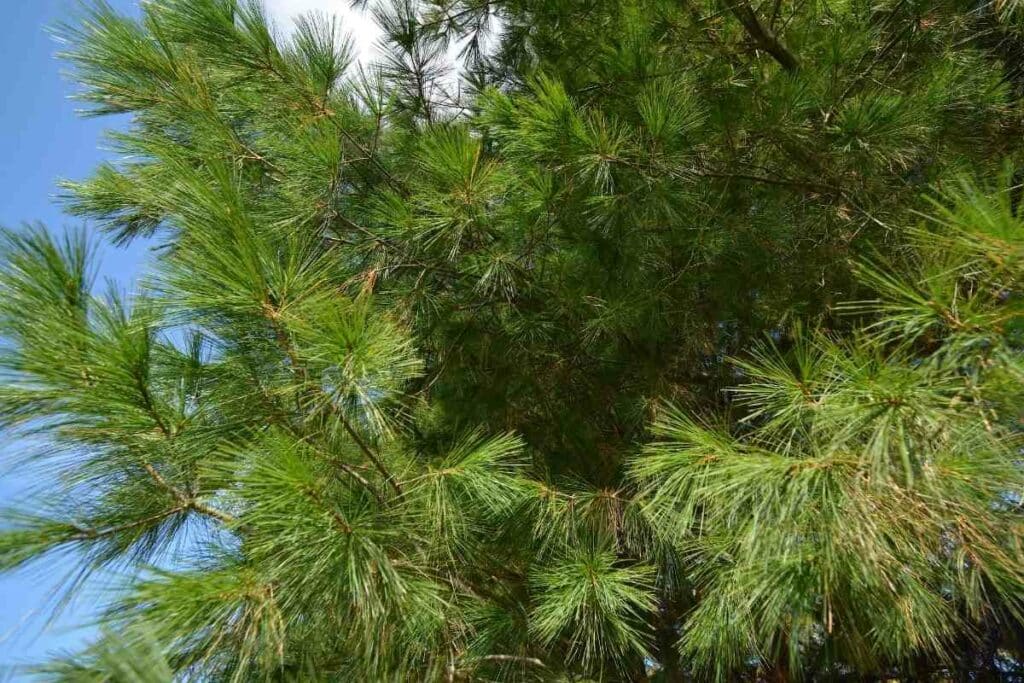
On the other hand, pine needles are a good source of mulch because they can be easily replenished.
Pine trees tend to drop their needles once a year. It’s also very easy to scatter around in a nice, neat layer.
Furthermore –
Pine needle mulch is easy to make by yourself if you have access to pine trees. However, you do need a layer that is about three or four inches deep to suppress weeds.
By using pine straw, it can save you some time and work. You should not need to water plants as often nor spend as long weeding.
Let’s sum up these pros and cons.
| Pros | Cons |
|---|---|
| Inexpensive | Can be a fire risk in certain areas |
| Easy to make yourself | The wind can blow it from where you spread it |
| Easy to spread | It is more difficult to find at garden stores than other types of mulch |
| Lightweight | It is harder to clear up your garden if it catches leaves in the fall season |
| Natural, rustic appearance | Some people prefer the appearance of other mulches that are more natural looking |
| Retains moisture | |
| Blocks weed growth but allows water to penetrate through to the soil below | |
| Lasts a long time – up to three or four years | |
| Reduces time spent on other tasks such as watering and weeding |
Wood Mulch Similarities
You should be very careful the way you use pine straw as mulch as it is a leaf from a tree. Pine Straw Mulch is very similar to other wood mulching as there is always a possibility of fire.
So please mulch pine at your own risk and have all the information and questions answered before starting.
How to Make Your Own Pine Straw Mulch
Firstly, rake up the needles and collect them together.
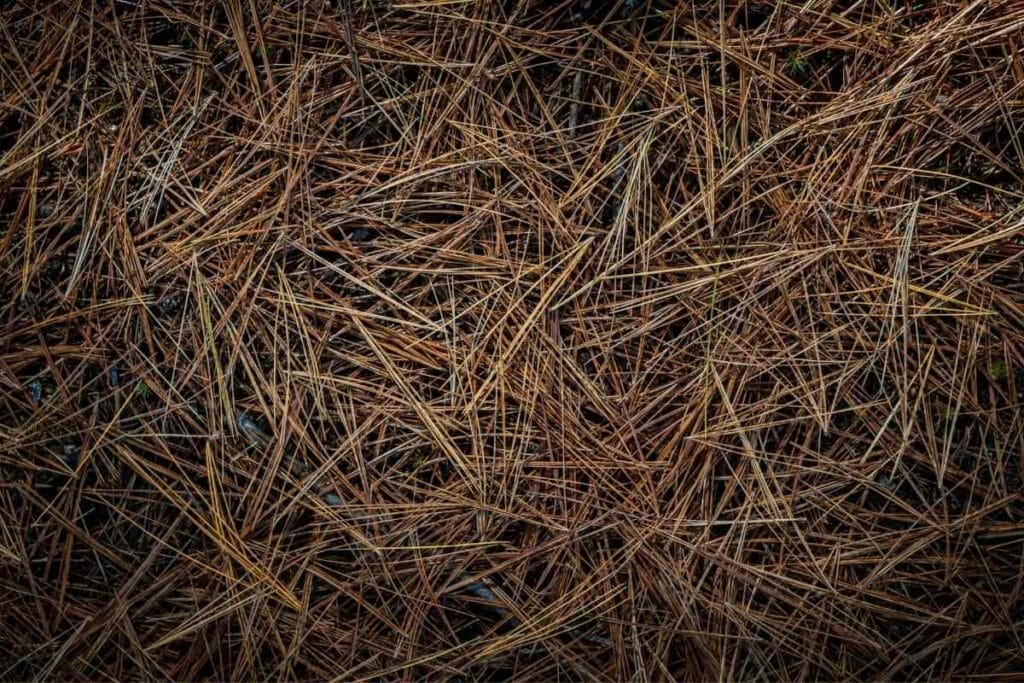
Next, if you have a shredder, run the needs through it.
If you don’t have a shredder, you could compost your pine needles for a while in a pile to help break them down a bit.
This means that when you then spread them around your plants, they will form a breathable, solid mat.
Final Thoughts
Using pine needles on your landscape means that you can take advantage of nature’s own recyclable materials, giving the benefits of weed control and moisture retention in your garden.
It’d be a shame to let so many pine needles go to waste!
